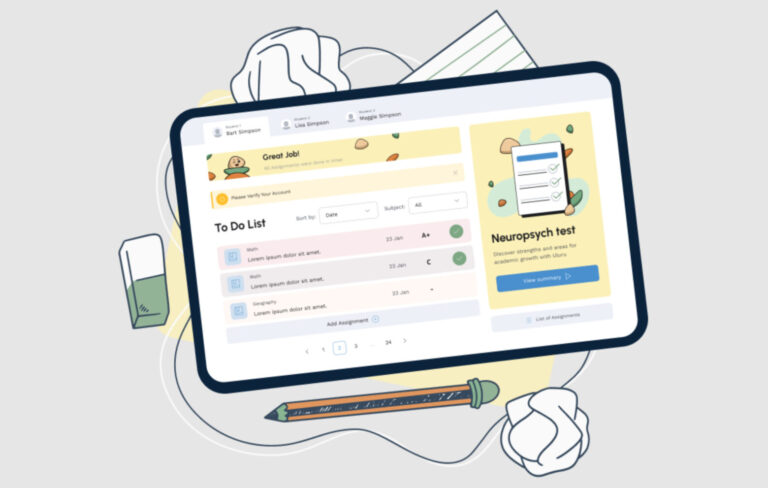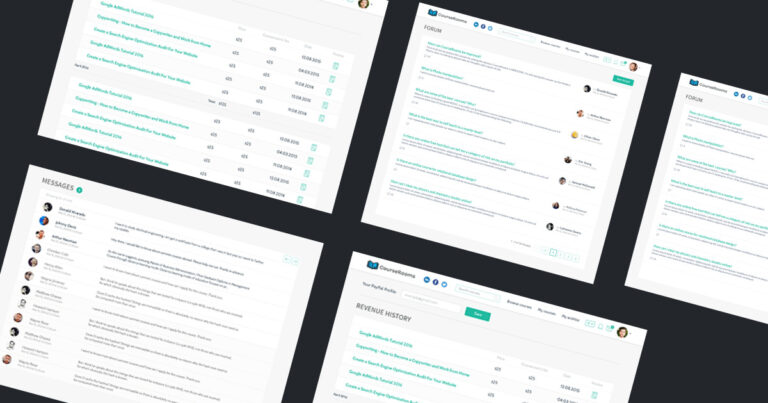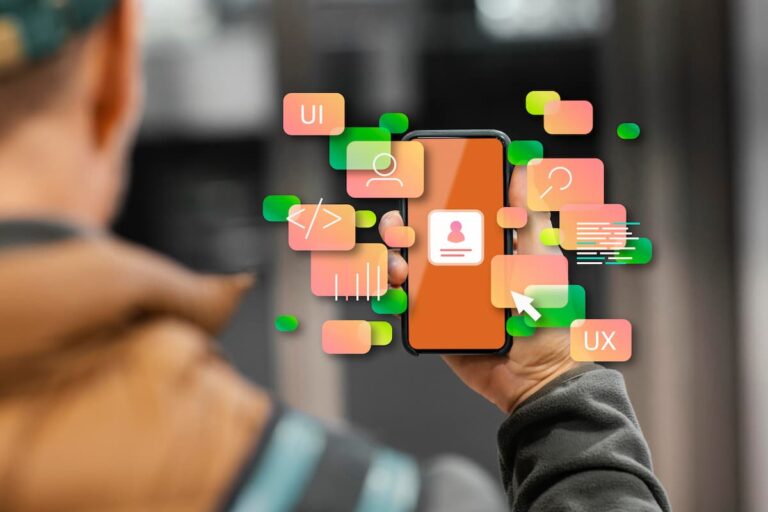Technology and education seem to go hand in hand, as reflected by the advances in technology that consistently facilitate seamless communication between students and teachers.
Educational technology or EdTech offers significant advantages over traditional learning methods by addressing numerous downsides in current educational systems.
Our school system often fails to acknowledge the uniqueness of each student. For example, some students grasp concepts rapidly, while others require a slower pace.
To cap it all, EdTech enhances the practicality, efficiency, affordability, and accessibility of learning for all students, regardless of their preferred learning styles.
As you can see, full-time, traditional schooling is becoming less attractive to parents. As times change, so do lifestyle choices, reflecting a significant shift in future planning.
Modern learners focus on minimal in-person interaction, extensive use of digital solutions, online connectivity, and the integration of online learning with play.
By the way, before the pandemic, investments in educational technology rose from $1.3 billion in 2015 to $4 billion in 2018. During the pandemic, global investment in EdTech further increased, reaching $4.1 billion in 2020—a year-over-year increase of $1.5 billion. In 2023, the global education technology market was valued at approximately $142.37 billion. It is projected to expand at a compound annual growth rate (CAGR) of 13.4% from 2024 to 2030.
Background on features of successful educational apps
When building a successful educational app, several key aspects are particularly important to consider.
User personas
Obviously, your educational mobile app will cater to various users and stakeholders, each with distinct needs, constraints, and motivations.
Therefore, it’s important to understand the value propositions and requirements of each group. This comprehensive approach will enable you to design and develop the most effective educational app possible.
Consider the following stakeholders.
Educational institutions
These educational institutions are focused on improving standardised test scores and overall academic performance while adhering to budget constraints. The key for this group is to balance efficiency and affordability.
Educators and facilitators
These users seek a smooth educational and work experience. Many are likely overwhelmed and exhausted from adapting to various systems and might lack the technological proficiency of their students. Therefore, your educational mobile app should offer simple and accessible onboarding, tutorials, documentation, and troubleshooting resources.
Students
Their motivation and engagement levels will differ based on age, subject, academic level, and performance. The goal is to provide an engaging, intuitive, and personalised learning experience.
Parents
Depending on their children’s age and academic level, as well as their involvement trends, this group would like to see transparency in their children’s education, progress, and performance. They will need access to monitor assignments, due dates, grades, and attendance.
Find out what is the education technology’s impact on learning.
UX/UI and logic
The major goal of EdTech is to enhance and simplify education, not complicate it. Therefore, it is absolutely necessary that any educational mobile app you develop is user-friendly, intuitive, and operates seamlessly.
While there are numerous elements of exceptional UX/UI design and logical workflows, some fundamental principles include:
- Using familiar features and symbols
- Providing onboarding and tutorials
- Ensuring a streamlined, logical, and intuitive workflow from one function to the next
- Maintaining an uncluttered user interface.
Monetisation
As previously noted, budgets and pricing are key factors in determining the viability of your product. Budgetary limitations can vary significantly depending on your target market. For example, public education systems often face limited funding and high student capacity, whereas private and charter schools or individual learning initiatives may have more financial resources available.
Consequently, consider tailoring your pricing and monetisation strategies to your specific market or providing flexibility within your business model. Consider implementing a pay-per-user subscription model rather than a fixed annual license or subscription. Alternatively, you might incorporate download fees or introduce paywalls for premium features.
Security
Ensuring robust security measures is important, as any lapses in privacy can lead to legal issues and damage your reputation. Protecting the privacy of students must be your top priority.
To comply with regulations that safeguard student data, adhere to the following federal laws:
- Family Educational Rights and Privacy Act (FERPA): Grants parents and eligible students the right to access educational records.
- Protection of Pupil Rights Amendment (PPRA): Requires schools to obtain written consent from guardians before students participate in U.S. Department of Education-funded surveys on sensitive topics, such as political or religious beliefs.
- Children’s Online Privacy Protection Act (COPPA): Mandates that parents have control over the collection of personal information online about their children.
- General Data Protection Regulation (GDPR): Applies to all personal data processing activities within the EU and to data subjects located in the EU.
- Digital Services Act (DSA) and Digital Markets Act (DMA): These recent regulations aim to create a safer digital space and ensure fair competition in the digital market. The DSA includes provisions for handling illegal content and protecting users, including minors.
Learn more about how to break the barriers in EdTech – expert view.
Top features of successful educational apps
Let’s get into the essential education app features for a successful learning product.
Artificial Intelligence

No discussion on education app development would be complete without addressing the role of artificial intelligence. AI-powered educational tools offer a range of advantages, including.
Personalised support
AI can analyse student performance data to deliver customised support aimed at improving academic outcomes.
Instant feedback
AI tools can offer immediate feedback on students’ work, enabling them to promptly identify and correct errors.
Task automation
AI can handle repetitive tasks, allowing teachers to allocate more time to lesson planning and provide individualised attention to students.
Popular educational apps are already using AI extensively in their platforms. For example, Elula, a US-based technology company committed to transforming the education system.
They empower children to cultivate their confidence, skills, and joy of learning. Elula provides advanced solutions that improve academic performance and unite kids and their parents helping to overcome barriers they face while learning.
Recently, Altamira introduced a transformative AI-powered solution that reimagines the traditional approach to diagnosing and monitoring cognitive, mood, and personality disorders in children. Our project offers an efficient and stress-free alternative to the conventional, labour-intensive process of neuropsychological testing.

When integrating AI into your educational app, there are several considerations to keep in mind.
Teacher concerns
Some educators may be biased about AI, fearing that it could automate their roles. It is important to understand that AI is intended to support rather than replace teachers. AI should be seen as a tool designed to enhance their work.
Lack of human interaction
AI can deliver personalised learning and instant feedback, but it lacks the human interaction and emotional support that students need for success. Over-reliance on AI can negatively affect students who miss out on crucial human engagement and support.
Privacy concerns
AI in EdTech also raises privacy issues. For example, OpenAI faced accusations in 2023 of violating data privacy laws by collecting and storing personal information, which heightened concerns about data security.
Therefore, EdTech companies must responsibly use AI to enhance educational experiences without replacing teachers or human interaction while ensuring compliance with privacy laws.
Assignment, tests, and personalised self-assessment

Effective classroom management relies on several core features. For an educational mobile app, it’s important to include the following functionalities.
Assignment management
Incorporate tools for managing tasks and assignments, complete with clear due dates, reminders, and submission portals.
Progress tracking
Enable features to monitor and track student progress.
File sharing and submission
Support file sharing and submission, including integrations with relevant third-party services.
Grading and feedback
Provide grading reports, rubrics, and feedback portals to facilitate comprehensive evaluation.
Personalisation and self-assessment
Include interactive practice quizzes, and problem sets with animations and graphics. Personalise these assessments based on student performance, adjusting question difficulty according to their progress and previous results.
Communication portals

Effective education hinges on fostering open communication between students and teachers. Communication not only supports learning but also helps students in developing soft skills. To enhance this interaction, your educational mobile app should include the following features:
- High-quality video and audio conferencing: Ensure clear and reliable virtual meetings.
- In-session chats: Facilitate real-time text communication during sessions.
- Non verbal feedback feature: Implement features such as “hand-raising” for non-verbal interaction.
- Polls: Use polls to gather immediate feedback and engage students.
- Breakout rooms: Create group chat for focused discussions and activities.
- Instant messaging: Enable direct messaging between teachers and students, as well as among students only.
- Forums with moderators: Set up multiple forums for structured discussions, question posting, and answering, with moderators to guide the conversation.
- Screensharing: Allow users to share their screens and annotate or signal on shared content.
For example, our team delivered educational platform CourseRooms peppered with numerous features, such as payment integration (PayPal), messaging system, forum, quizzes to complete the level, video content, wishlist, and beyond.

Integration with LMS, SIS, and OPM platforms

Numerous learning management systems (LMS), school information systems (SIS), and online program management (OPM) systems are already in use. Your EdTech app will likely function as one component within a broader educational technology stack.
Consequently, ensuring inch-perfect integration with these existing third-party applications is a decision that can reap tremendous benefits. This is especially important in environments where tech support and technical expertise may be limited.
Wonder how to measure software development performance metrics? Read more in our blog.
Gamification

Incorporating gamification into your learning app can be a game-changer—pun intended. By integrating elements traditionally found in games, such as rewards, challenges, and leaderboards, you can transform the learning experience into something engaging and motivating.
- Engagement through rewards: Just like in games where players earn points or badges for achieving milestones, your Edtech app can use similar incentives to encourage progress.
- Challenges and quests: Introducing challenges or quests can add a layer of excitement and purpose. For example, users could participate in weekly challenges related to course material or embark on learning quests that require them to complete a series of tasks.
- Leaderboards and competitions: Friendly competition can be a powerful motivator. By implementing leaderboards that display top performers, you create a space where learners can see how they stack up against their peers.
- Progress tracking and feedback: Gamification elements often include visual progress tracking, such as progress bars or level-ups. This can help learners see their advancement in real time, providing a sense of accomplishment and encouraging them to keep going.
By incorporating gamification elements, your EdTech app can create a more engaging and motivating learning experience. It taps into the intrinsic desire for achievement and recognition, making education not just a task but an exciting journey.
Simple authentification

Implementing simple authentication methods, such as strong passwords or Single Sign-On (SSO), greatly simplifies the user experience for your app’s audience. Since a primary goal of advanced educational mobile app is to streamline processes and enhance convenience, ensuring easy and secure access is a must.
Social media element integration

Social media platforms like Facebook and Instagram have perfected the art of engaging users, drawing in millions or even billions daily through a blend of algorithms and interactive features, such as reposts and push notifications. Using these strengths can be highly effective for enhancing a learning app. To capitalise on this, consider the following strategies:
- Incorporate user-generated content: Allow users to create and share their own learning materials on the platform.
- Implement social media features: Integrate a ‘likes’ feature and develop algorithms that promote content based on user engagement and interests.
Chatbot systems

Offline capabilities

Data analytics

- Quantitative data: For example, the percentage of users who complete a specific course.
- Qualitative data: For example, user requests for new features.
The final words
Many businesses and educational institutions begin the application development process with a basic version of their EdTech app and gradually incorporate more advanced features as they progress.
Users should be able to adjust the app’s features to suit their individual learning needs. Key areas to consider include:
- UI/UX customization: Allow users to personalise their interface and experience to enhance usability.
- Learning customisation: Implement features such as adjustable difficulty levels or analytical algorithms that tailor the learning experience to each user.
By focusing on these elements, you can ensure that the app meets diverse user needs and improves their overall experience.
The education sector is undergoing a significant transformation driven by the shift to remote learning. Capitalising on the increasing demand for EdTech apps can be a profitable opportunity, but it requires offering an app with a comprehensive range of features.
At Altamira, we create commercially viable and feature-rich educational mobile apps that resonate with your user needs and facilitate the learning process.
We are constantly developing approaches that can help us compress the software development lifecycle (SDLC) to develop quicker without losing quality and stay within the budget.
Enable educators to offer personalised learning experiences with AI-powered intelligent tutoring systems, predictive analytics, and automated grading. Kickstart your MVP project that focuses on the core functionalities of your education app! Contact us to get a free expert consultation answering all your questions.






